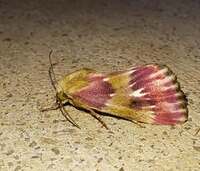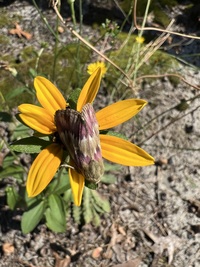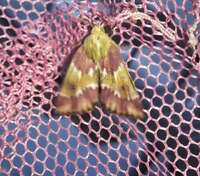| Larval Host Plants: Larvae reportedly feed on blazing-star (Liatris), including Dense Blazing-star (L. spicata) and Northern Blazing-star (L. scariosa) (Wagner et al., 2011). In North Carolina, both of those species, however, are restricted to the mountains, while our records for Schinia sanguinea are all from the Coastal Plain. Other Liatris species that are more likely hosts in this range include Shaggy Blazing-star (L. pilosa), Sticky Blazing-star (L. resinosa), and Wand Blazing-star (L. virgata). - View |

 »
»



 »
»

